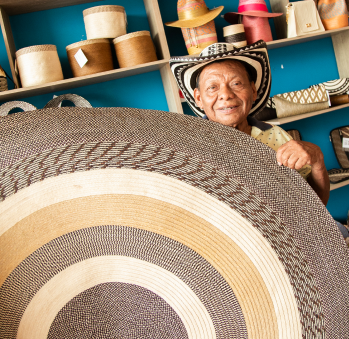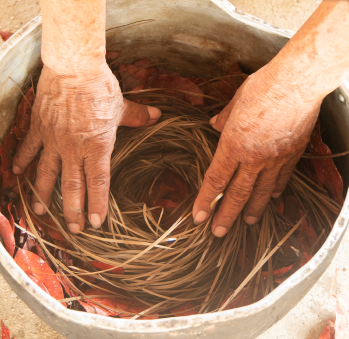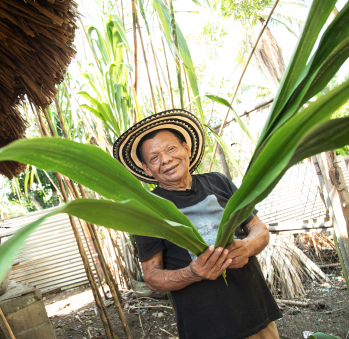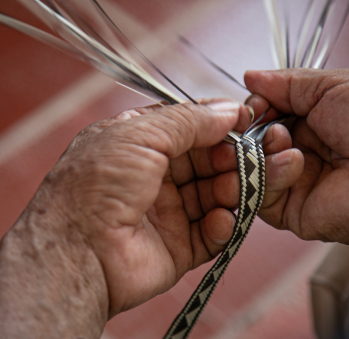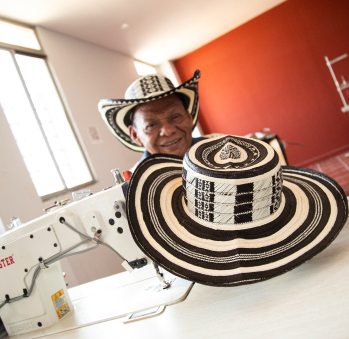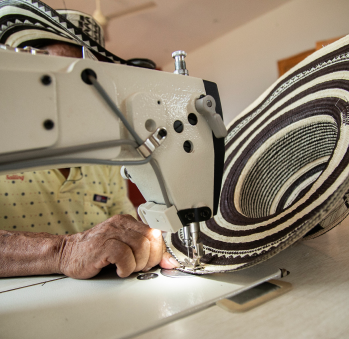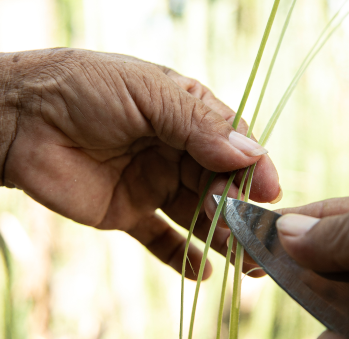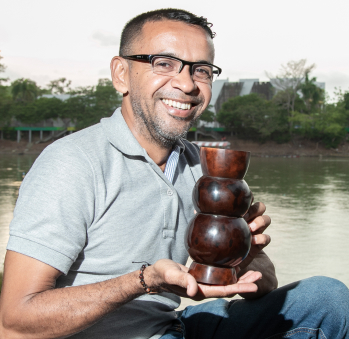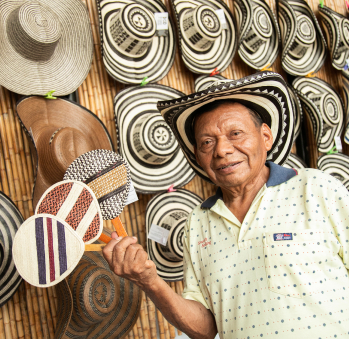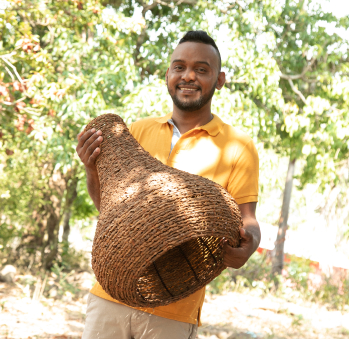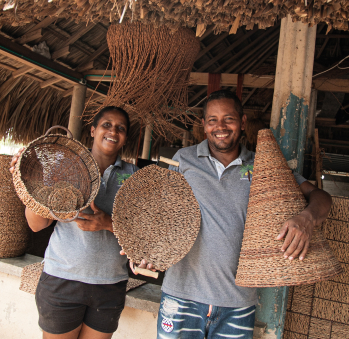Marcial Montalvo
Embarking on a journey hand in hand with Marcial Montalvo to uncover the artistry of the sombrero vueltiao is to delve into a sense of heritage. Beyond the beauty of his words when speaking about the caña flecha, the fiber from which these icons of Caribbean culture are woven; surpassing his charisma and modesty, which lead him to acknowledge that he might not be the best —though everyone around him says otherwise—; transcending the gracious words with which he expresses gratitude to those who helped him emerge—beyond all of this, which is already substantial—he speaks of his forebears, the zenúes, and explains that what we now observe on the hat—likely unnoticed by many—the pintas and patterns embellishing its crown, encapsulate how his ancestors depicted their world. He proudly conveys that “”what they saw, they captured within their thoughts and translated into the braids.”” This is how, within a single hat, one can find depictions of a cat’s small paws, the heart of an icotea, the heart of Jesus, the chest of a cricket, turtles, butterflies, spiders, corn, ants, lemon and cocorilla flowers, the eyes of bulls or cats, and even mojarras. He learnt how to create 47 distinct pintas, or motifs, and prays for them not to be forgotten.
With warmth, Marcial recollects his first encounter with a hat, one that was worth only a few cents. He reminisces about establishing his initial workshop in 1971 and recognizing the potential for what he wove to evolve into a national symbol when he witnessed Miguel ‘Happy’ Lora, the new bantamweight boxing champion, wearing a sombrero vueltiao live on television on August 9th, 1985. He also recounts that in 1987, he formally referred to his domain as a craft. Driven by the conviction that this designation would pay homage to Mr. Sixto and Mr. Pascalio, his father and grandfather, both farmers from Tuchín who balanced yucca and yam cultivation with hat-making to shield themselves from the sun’s unrelenting rays.
Throughout these decades dedicated to preserving Tuchín’s heritage, Marcial has come across countless braids. He vividly remembers the late days of 1980 when a collective enthusiasm for caña flecha redirected everyone’s efforts toward it. Artesanías de Colombia propelled its use by organizing workshops focused on product innovation. Many students who had left the zenú indigenous reservation to study Agronomy centered their theses on caña flecha cultivation, a means of preserving their roots. Prior to this, hats were crafted from paja costera, or a thicker variety used for ordinary headwear. The initiative to cultivate caña flecha not only aimed to develop a local palm boasting delicate fibers, but also ensured they would ever run out of raw material. Consequently, hectares were dedicated to its growth. In a census conducted in the year 2000—quite some time ago—approximately 200 hectares of caña flecha crops were tallied.
Marcial possesses comprehensive knowledge of every step in crafting these hats. Although work was clearly divided by genres when he was younger—women weaving and men sewing—the landscape has changed, and nowadays anyone can undertake both tasks. Nevertheless, he acknowledges that women face greater challenges than men. They are the ones dyeing the caña flecha because, he confesses, men are reluctant to stick their hands in the mud used for dyeing the fibers black. He also concedes that men tend to grasp the craft more swiftly—not due to superior aptitude, but because they have more free time, since they are not in charge of household chores, childcare, or cooking. Marcial, nonetheless, knows how to do everything, and so he does. He employs plant-based dyes such as achiote, batatilla, matarratón, pajarito, and sangregado.
Marcial is a true master at crafting hats with 19, 21, and 23 braids. Witnessing his hands in action provides insight into what it means to be a weaver, one who bears Tuchín’s legacy like an birthmark on his skin.
Craft
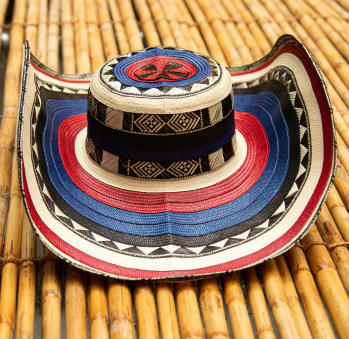
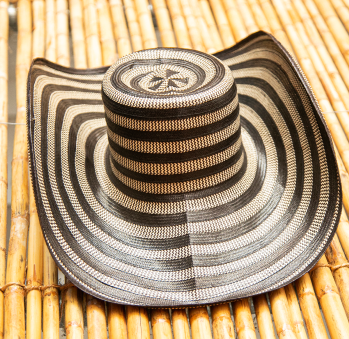



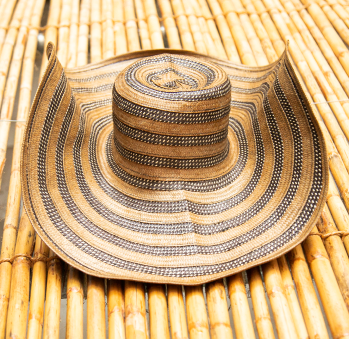






Artisans along the way
Artisans along the way
No puede copiar contenido de esta página









































